Millions of tourists visit the Piazza San Marco every year. There are however lots of elements which remain hidden for the first time visitor. The impressive square, the stunning basilica, the beautiful Palazzo Ducale and the campanile are so overwhelming that visitors are blown away and don’t require additional information. However, once you have seen it several times, it’s time to discover the details of the Piazza.
This post gives you an overview of a variety of surprising facts which you can explore at ease, even when you’re surrounded by too many people. Now, let’s get some numbers right.
0 churches
There are almost no traces left, but the San Geminiano church once stood at the current location of the Museo Correr. It was built in 1557 by Jacopo Sansovino, as part of his overall design of the Piazza San Marco, and faced the basilica. It was however destroyed in 1807 by Eugène de Beauharnais, the stepson of Napoleon, who wanted to have his own palace on the San Marco square. You can find a memory plaque for Jacopo Sansovino, who was buried in the church, on the floor of the gallery under the sotoportego at the entrance of the Museum.
DID YOU KNOW? Tintoretto painted the altarpiece ‘Angelo che predica Santa Caterina d’Alessandria del suo martirio’ (Angel foretelling Saint Catharine martyrdom) for this church between 1560 and 1570. Luckily, it was saved before the church was destroyed. It has been owned for a very long time by David Bowie and it is now on display at Palazzo Ducale.
1 basilica
The first church on the location of the San Marco basilica was built around 830. The construction of the current building in Italo-Byzantine style started around 1063. It was originally the private chapel of the Doge, as San Pietro di Castello was at that time the official cathedral of Venice. When the economic center moved towards the Rialto and San Marco area, the San Marco basilica became the official cathedral of the city in 1807.
DID YOU KNOW? The Italian Mint presented in 2017 a new 2 euros coin which shows the San Marco basilica, in celebration of the 400th anniversary of the completion of the basilica. 1.5 million coins have been distributed, so you might be carrying a souvenir of Venice in your purse.
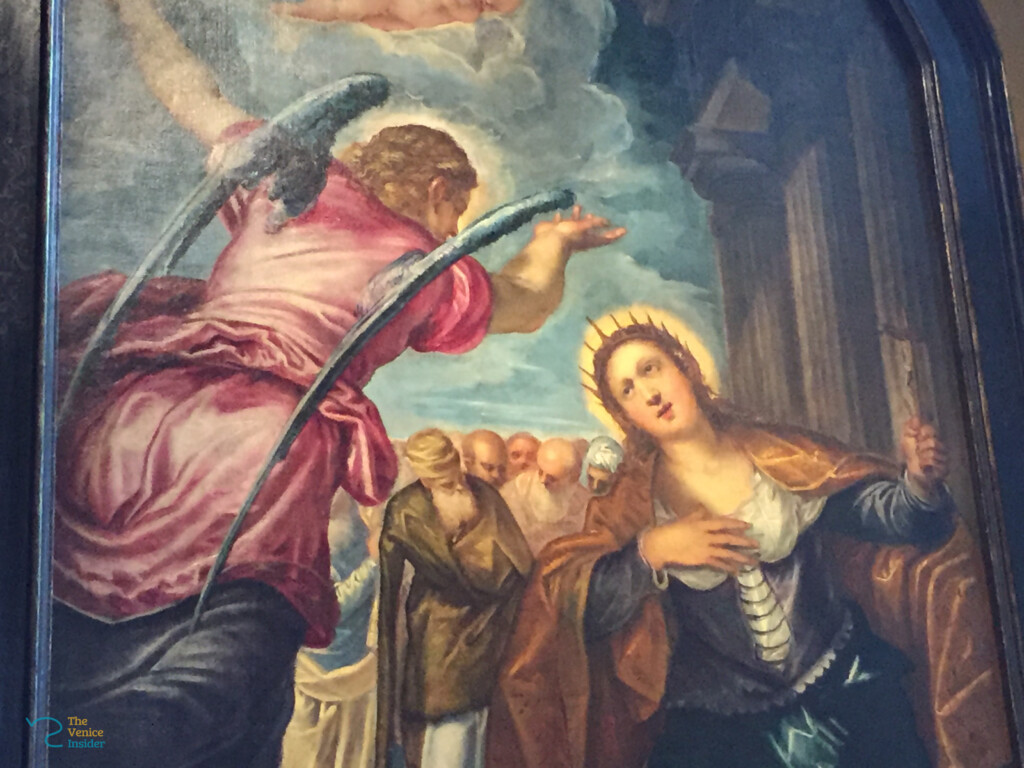
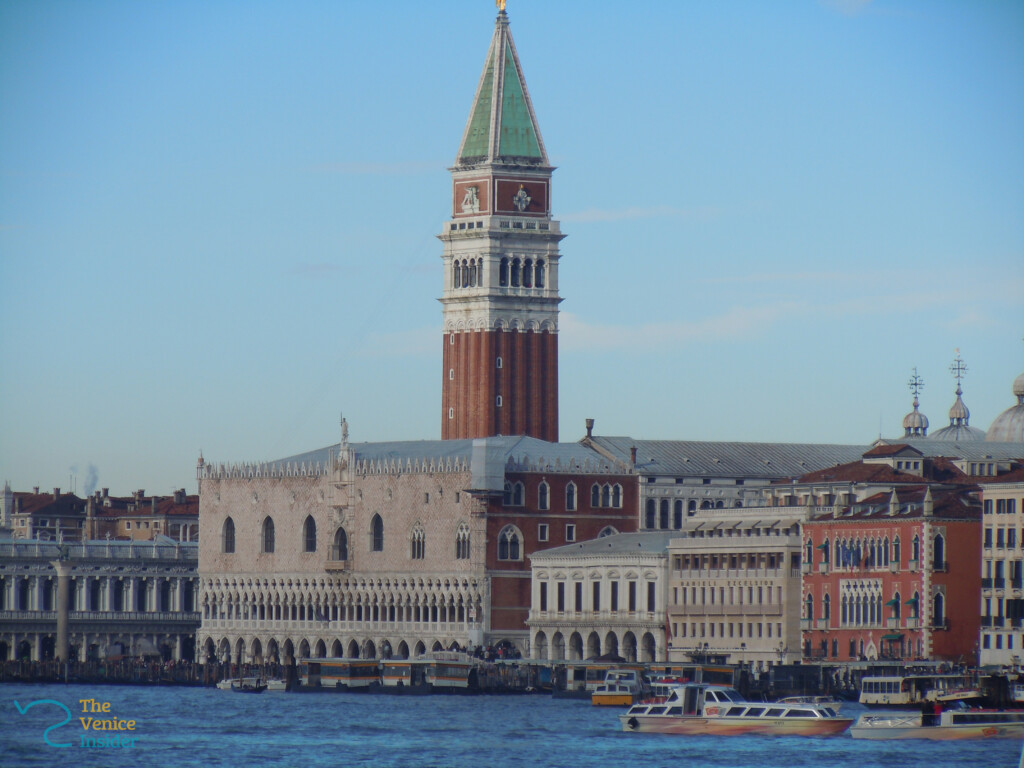
1 Piazza
The Piazza San Marco is the only square in Venice which is called a Piazza. It is shaped as a trapezium with a length of 176 m and a width between 62 m and 82 m. The small square with the 2 lions next to the basilica is called the Piazzetta dei Leoncini. The one with the 2 columns in front of the lagoon is the Piazzetta San Marco. The other 135 smaller public squares in Venice, besides the Piazzale Roma, are called Campo (such as Campo di Santo Stefano, Campo di Santa Margherita). You can find more facts about numbers of streets, bridges or canals in Venice on the website of My Corner of Italy.
1 night out
The Doge never left his Palazzo Ducale at night, except on Christmas Day. On the evening of December 25th, he would first attend a mass at the basilica before sailing across the Bacino di San Marco, amidst hundreds of illuminated boats. Together with his entourage, he would then enter the church on the island of San Giorgio Maggiore.
2 pink columns
When you look at the side of the Palazzo Ducale which faces the Marciana library, you will notice 2 pink columns between all the white ones. The doge used to stand here to announce the death sentences. The pink colour symbolizes blood. The executions then took place between the 2 columns with the statues of San Teodoro and the lion of San Marco. From between the columns, the condemned could watch the clock tower to see the exact hour of their death.
DID YOU KNOW? Due to its history of executions, walking between these 2 columns might bring you bad luck. Venetians refer to it as ‘trovarsi tra Marco e Tadoro’ which means you are in serious trouble. You should also never walk under the corner of the arcades of Palazzo Ducale. So, just to be on the safe side, make sure to take the route between the column with the lion and the Palazzo.
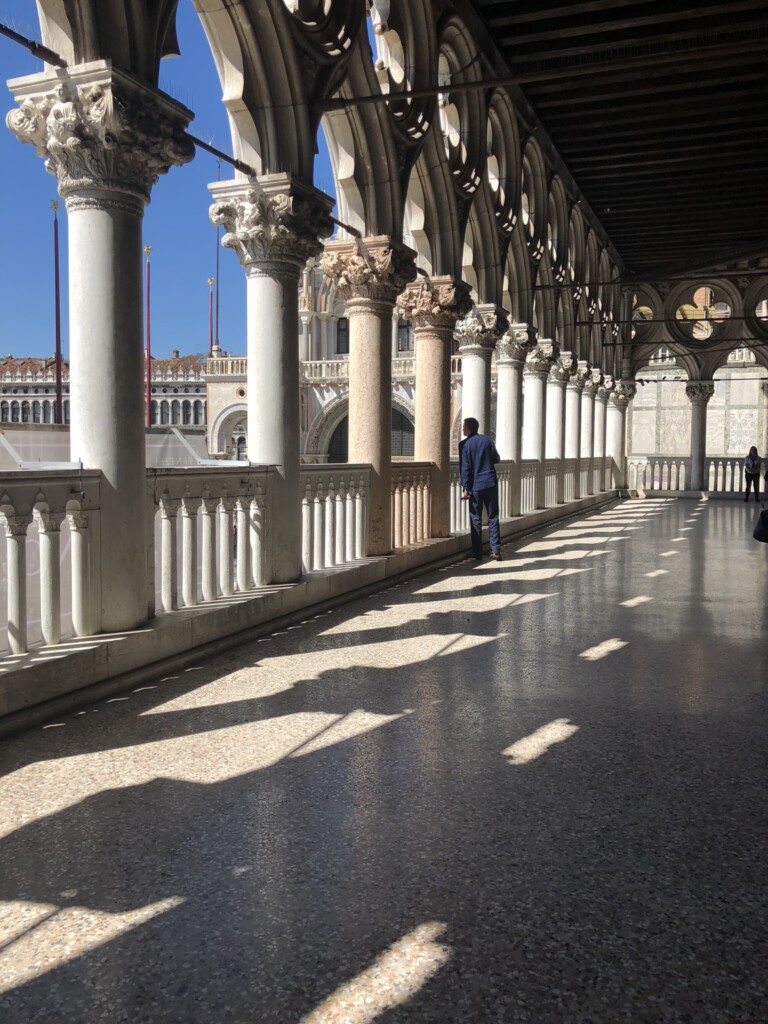
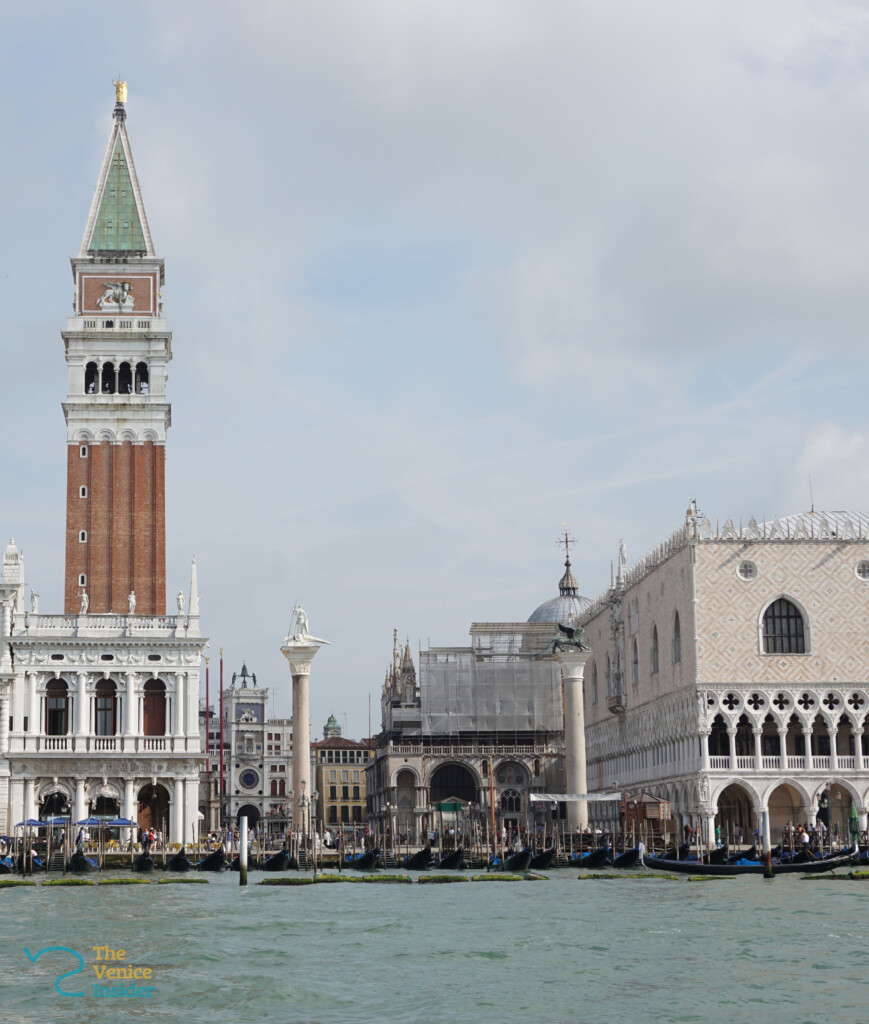
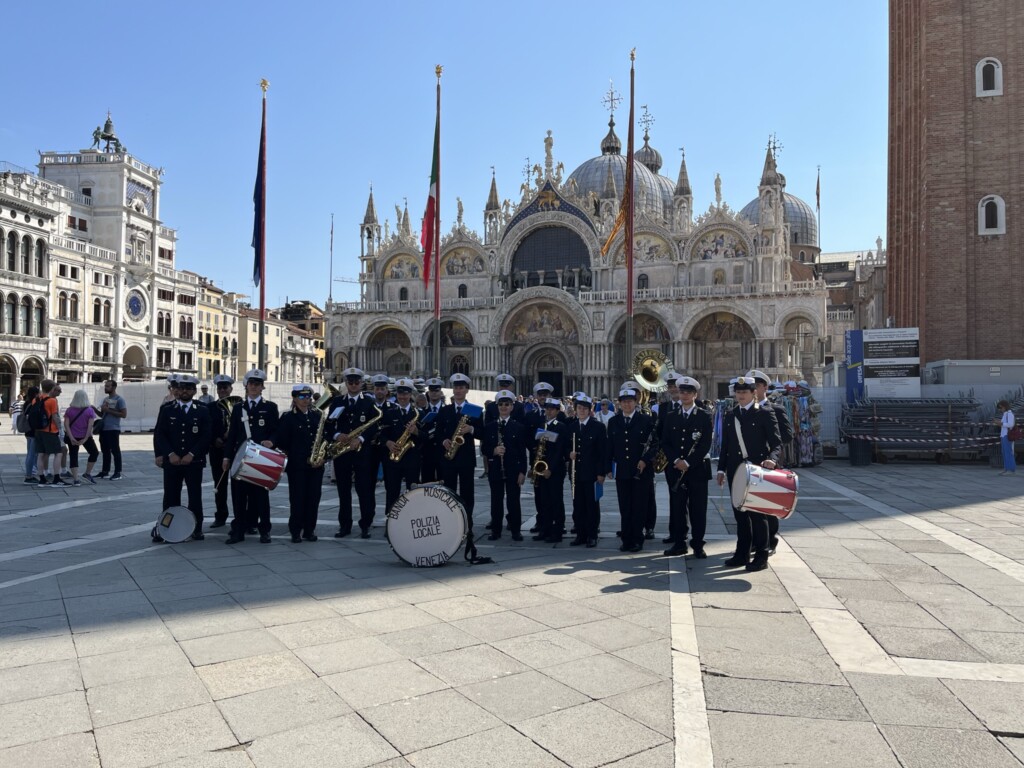
2 or 3 columns with a statue
Some people believe however that there was supposed to be a third column besides the ones with San Teodoro and the San Marco lion. Apparently, three columns were delivered by boat to Venice in 1172. During the process of moving them from the boat to the shore, one column fell overboard into the lagoon. A team of researchers searched the lagoon between the Marciana library and the Ponte della Paglia (in front of the Bridge of Sighs). And who knows? Maybe one day the city of Venice will have a third granite column.
2 men and 3 kings
On top of the clock tower (Torre dell’Orologio), next to the basilica, you can see a bearded old man and a young man hit the clock with a hammer on the hour. The old man hits first to indicate the time that passed. The young man symbolizes the future or the time that still has to come. These statues were created by Ambrogio delle Ancore in 1497. You can visit the clock tower with a guided tour (see my post ‘Take your time to grasp the details of the clock tower‘).
DID YOU KNOW? On January 6, Epiphany, and on the Festa della Sensa, Ascension, the statues of the three kings come out of the Torre dell’Orologio to salute the Virgin and Child. You can watch it every hour on the hour.
3 flagpoles
The three flagpoles in front of the basilica are original ship’s masts. They refer to the 3 kingdoms that Venice conquered: Cyprus, Crete and the Peloponese. During the Napoleonic time, they were considered a symbol of tyranny and almost demolished. To save them, it was said they referred to Freedom, Virtue and Equality. Now they are decorated with the Venetian, Italian and European flags.
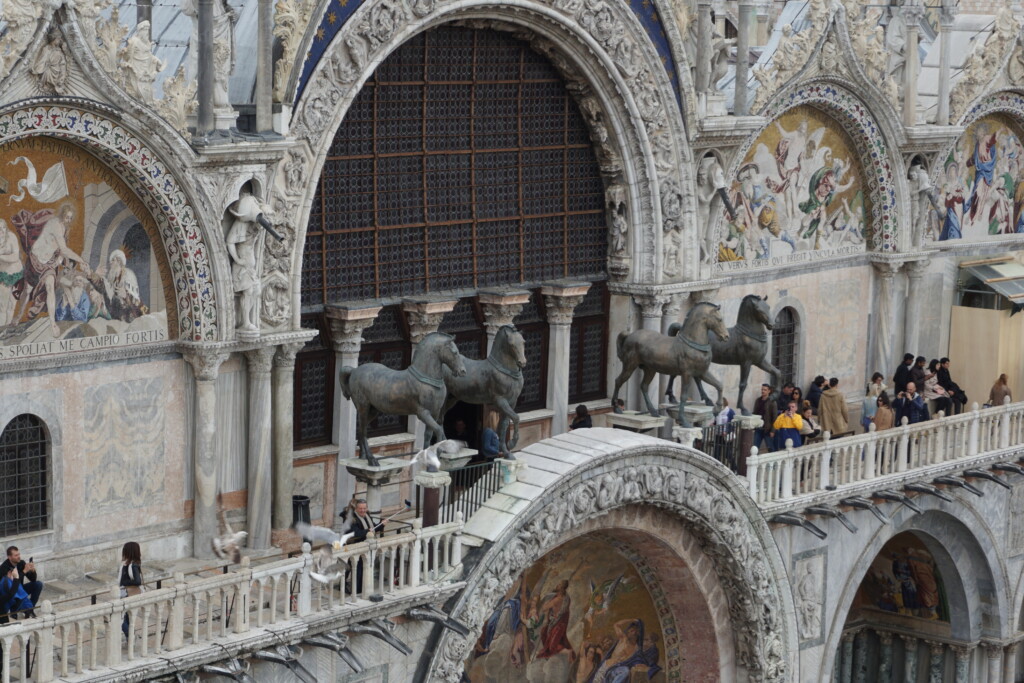
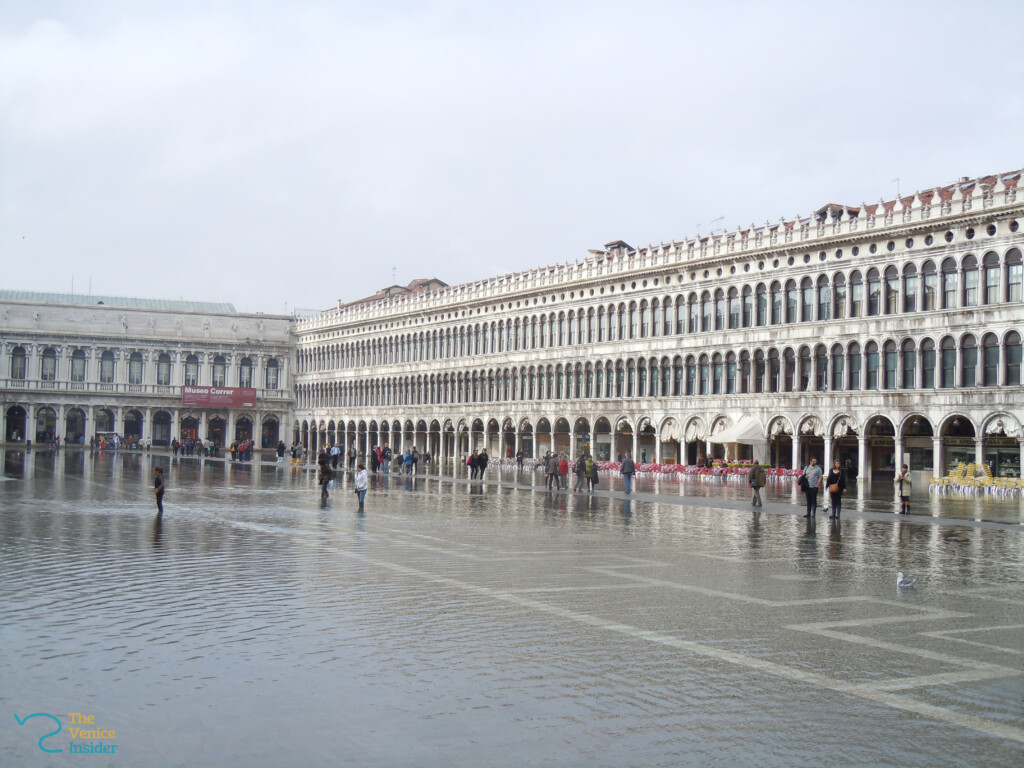
4 horses
It is unclear when the 4 horses on the San Marco basilica were originally created, but it is certain that they have been displayed at the Hippodrome of Constantinople. In 1254, the horses were looted by the Venetian army and sent to Venice by Doge Enrico Dandolo. In 1797, Napoleon confiscated them and transported them to Paris. On December 13, 1815, Captain Dumaresq finally returned the 4 horses to the San Marco basilica in Venice. To protect the original horses from the air pollution, these have been moved inside the basilica around 1980. The ones outside are replicas.
INSIDER TIP: You can read more about this art plundering in this post of SeeVenice. If you are interested to know more about the horses, you can find plenty of information in the book ‘The Horses Of St Marks: A Story of Triumph in Byzantium, Paris and Venice’ written by Charles Freeman.
82 cm
Piazza San Marco is the lowest point in Venice. When there is an acqua alta, it is therefore always the first area to be flooded as soon as the water level reaches 82 cm. At 90 cm, approx. 2% of the historical center is flooded, which is the area around San Marco. Contrary to what you might expect, the water doesn’t flood from the lagoon onto the square. It comes from underneath through the drain holes and hence starts at different places on the Piazza. Acqua alta generally takes place in winter time, when a combination of astronomical tides, strong south wind (scirocco) and sea waves cause a larger inflow of water into the Venetian lagoon.
DID YOU KNOW? Venice is built on the water and is supported by millions of wooden piles, each about 14 cm thick and up to 3 metre long. Of these, 100,000 are used to support the campanile on the San Marco square.
1720
Now that you know plenty of details about Piazza San Marco, it’s time to have a drink at Caffè Florian and enjoy the beautiful surroundings. Florian is considered to be the oldest café in Europe. It was opened on December 29, 1720 by Floriano Francesconi as ‘Alla Venezia Trionfante’ (To the Triumphant Venice). It has later been renamed thanks to the clientele who called it ‘Caffè Florian’ in honour of its owner. The typical concerts outside on the Piazza have been introduced early 20th century.
If you want to continue your discovery of Venice, I recommend to take a walk along the waterfront of the lagoon.
Enjoy your walk!
